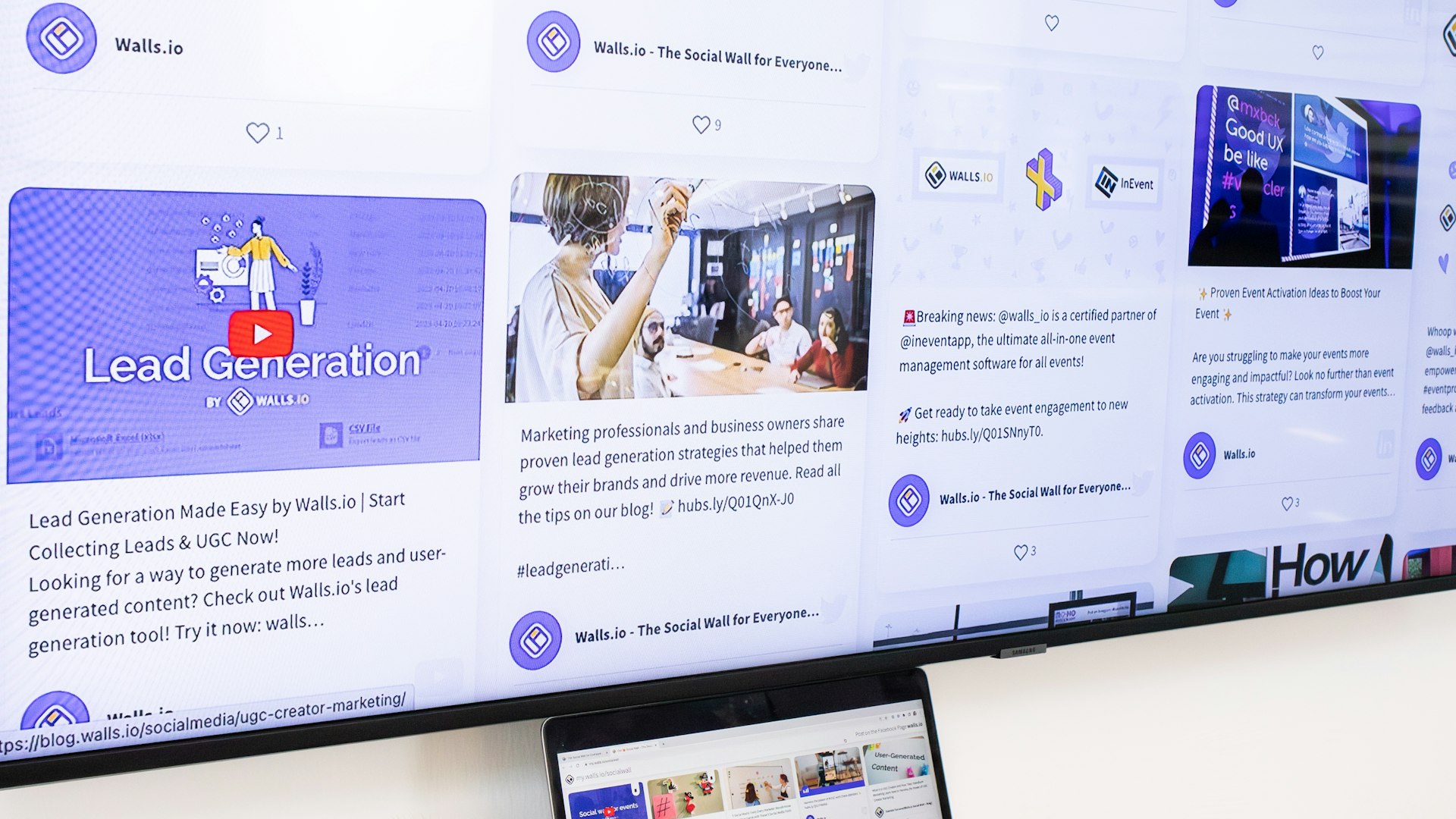The Importance of Responsive Website Design in Today’s Digital Landscape In the ever-evolving digital world, the significance of responsive website design cannot be overstated. With the advent of smartphones and tablets, the way users interact with the web has undergone a seismic shift. No longer are desktop computers the primary gateway to the internet; mobile […]
In the ever-evolving digital world, the significance of responsive website design cannot be overstated. With the advent of smartphones and tablets, the way users interact with the web has undergone a seismic shift. No longer are desktop computers the primary gateway to the internet; mobile devices have taken the lead, offering the convenience of accessing information on the go. This paradigm shift necessitates a design approach that is flexible, adaptable, and user-centric. As a content writer deeply immersed in the nuances of website design, I’ve observed firsthand the transformative impact that a responsive design can have on a business’s online presence.
The prevalence of mobile device usage has skyrocketed in recent years, fundamentally altering the digital landscape. A responsive website automatically adjusts its layout and content to fit the screen size and resolution of the device it’s being viewed on, ensuring an optimal user experience. This adaptability is crucial, as it directly correlates with how users perceive a brand and interact with its website. The statistics are telling: a significant portion of internet traffic now comes from mobile devices. According to a report by Statista, as of the second quarter of 2020, mobile devices (excluding tablets) accounted for 51.53% of global website traffic, consistently hovering around the 50% mark since the beginning of 2017. This trend underscores the necessity for businesses to adopt a mobile friendly website design to stay relevant and accessible.
To illustrate the growth of mobile internet consumption, let’s delve into the numbers. Data from various sources indicate a steady increase in mobile data usage over the years. For instance, the amount of data consumed via smartphones has been on an upward trajectory, with an average smartphone user consuming approximately 8.9 gigabytes of data per month in 2020, a stark increase from the 2.3 gigabytes reported in 2014. This exponential growth is a clear indicator of the central role mobile devices play in our daily lives, further emphasizing the importance of responsive website design in reaching a wider audience.
| Year | Monthly Data Usage Per Smartphone (GB) | Global Mobile Traffic Share (%) |
|---|---|---|
| 2014 | 2.3 | 25.49 |
| 2015 | 3.7 | 33.4 |
| 2016 | 5.1 | 39.22 |
| 2017 | 6.8 | 50.3 |
| 2020 | 8.9 | 51.53 |

As I delve deeper into the intricacies of responsive website design, it’s essential to highlight the key features that make this approach so effective. At the heart of responsive design lie fluid grids, flexible images, and media queries. These technical components work in harmony to create a seamless experience, regardless of the device’s screen size or orientation. Fluid grids are a cornerstone of responsive design, allowing layouts to resize dynamically based on the proportion of screen space available. This flexibility ensures that the website’s structure remains intact and coherent, no matter the viewing context.
Flexible images, or ‘fluid images’, are another critical aspect. They scale within their containing elements to prevent them from spilling outside their containers, which could disrupt the layout’s flow and compromise the visual integrity of the site. This adaptability is achieved through CSS techniques, ensuring that images maintain their quality without affecting the site’s loading speed. Media queries, a feature of CSS3, play a pivotal role by enabling the webpage to use different CSS style rules based on the characteristics of the device, such as its width, height, and resolution. By employing media queries, designers can create a multitude of layouts using the same HTML codebase, each optimised for a specific range of devices.
The role of responsive design in enhancing user experience (UX) cannot be overstated. A website that adapts to the user’s device creates an intuitive and engaging environment that encourages interaction and reduces frustration. This adaptability not only improves accessibility but also contributes to a positive perception of the brand. In today’s digital age, where user expectations are higher than ever, delivering an exceptional UX is paramount. A responsive website signals to users that a business values their time and is committed to providing a hassle-free browsing experience, which can lead to increased customer loyalty and conversion rates.
| Layout Type | Description | Adaptability |
|---|---|---|
| Fixed Grid | Layout width is set in pixels and does not change with the browser window. | Poor – Content may be cut off or require horizontal scrolling on smaller devices. |
| Fluid Grid | Layout uses percentages for widths, allowing it to resize with the browser window. | Excellent – Maintains structure and usability across different screen sizes. |

In my professional journey as a content writer, I’ve seen the transformative power of responsive website design on businesses. One of the most compelling advantages is the improvement in user engagement. A responsive site provides a fluid and consistent experience across all devices, which encourages users to stay longer and interact more with the content. This increased engagement is reflected in reduced bounce rates, as users are less likely to leave a site when it performs well on their device of choice. Statistics from Google have shown that if a website isn’t mobile-friendly, 61% of users are likely to leave and go to another site. On the flip side, when a site is responsive, the same report suggests that 67% of users are more likely to make a purchase or use a service.
Another significant business benefit is the enhancement of search engine optimisation (SEO). In today’s digital marketplace, a strong online presence is crucial, and SEO is at the heart of being found online. Google has explicitly stated that mobile-friendliness is a ranking factor, which means that responsive websites are favoured in search results. This is particularly important considering that over 50% of all global web traffic comes from mobile devices. By adopting a mobile friendly website design, businesses can improve their search engine rankings, leading to increased visibility and potentially higher traffic volumes.
The correlation between responsive design and SEO performance is not just theoretical; it’s backed by data. For instance, after implementing a responsive design, a company may witness a significant improvement in its search rankings. This is because responsive sites have one URL and the same HTML across devices, which makes it easier for Google to crawl and index the content. Additionally, responsive design reduces the likelihood of common mistakes that affect mobile sites, such as unplayable content and faulty redirects, further boosting SEO.
| Aspect | Impact of Non-Responsive Design | Impact of Responsive Design |
|---|---|---|
| User Engagement | Higher bounce rates due to poor user experience on mobile devices. | Lower bounce rates and increased time on site due to a seamless experience across devices. |
| SEO Ranking | Lower rankings in search results due to not meeting mobile-friendliness criteria. | Improved rankings as mobile-friendliness is recognised and rewarded by search engines. |

The digital landscape is not just about adapting to different screen sizes; it’s also about embracing modern design trends that resonate with today’s users. I’ve observed a significant shift towards minimalism in website design, where the mantra ‘less is more’ is more prevalent than ever. This minimalist approach aligns perfectly with responsive design, as it focuses on the essentials, removing unnecessary clutter that could impede the website’s performance on various devices. By prioritising content and functionality, minimalism ensures that websites remain lightweight and fast-loading, which is crucial for mobile users who may have limited data plans or slower internet connections.
Another trend that goes hand in hand with responsive design is the mobile-first approach. This strategy involves designing for the smallest screen first and then scaling up to larger screens, a stark contrast to the traditional method of starting with the desktop version. The mobile-first approach is not just a design strategy; it’s a philosophy that places the needs of mobile users at the forefront, acknowledging the growing dominance of mobile browsing. By adopting this approach, designers can ensure that the most critical information and user interface elements are optimised for mobile users, which enhances the overall user experience.
The implementation of responsive design is made more accessible by the use of modern CSS frameworks. These frameworks come equipped with a set of pre-designed, standardised elements that are responsive out of the box. Bootstrap, Foundation, and Materialize are some of the popular frameworks that facilitate the creation of responsive features, such as navigation bars, modals, and grid systems. These frameworks not only speed up the development process but also ensure consistency and reliability across different browsers and devices. They are continuously updated to incorporate the latest best practices in responsive design, making them an invaluable tool for web developers aiming to stay on the cutting edge.
| Trend | Description | Impact on Responsive Design |
|---|---|---|
| Minimalism | A design philosophy that emphasises simplicity and the use of minimal elements. | Facilitates faster loading times and cleaner layouts, improving mobile user experience. |
| Mobile-First Approach | Designing for mobile devices before creating versions for larger screens. | Ensures that mobile users have access to the most important content and features first. |
| CSS Frameworks | Pre-designed elements and tools that help create responsive websites efficiently. | Provides a reliable foundation for building responsive sites with consistent behaviour across devices. |

Selecting the ideal website design agency is a pivotal decision that can have long-lasting implications for your business. In my experience, the key to a successful partnership lies in finding a company that not only has the technical expertise but also understands your business’s unique needs. When evaluating potential agencies, consider their experience in creating responsive website designs. Look for a robust website design portfolio that demonstrates a track record of versatile and effective websites across various industries. It’s also wise to assess their client testimonials and case studies, which can provide insight into their process and the satisfaction of their clients.
The importance of a custom website design cannot be overstated. A one-size-fits-all approach simply doesn’t cut it in the competitive online space. Your website should be a reflection of your brand’s identity, values, and objectives. A top-tier website design company will take the time to understand your business and craft a site that is not only visually appealing but also strategically designed to meet your specific goals. This bespoke approach ensures that your website will stand out in the digital crowd, providing a unique user experience that aligns with your target audience’s expectations and needs.
In today’s market, where 38% of visitors will stop engaging with a website if the content or layout is unattractive, the stakes are high. Your chosen agency should be proficient in the latest design trends and technologies, ensuring that your site remains cutting-edge and future-proof. They should also offer comprehensive website design services, including SEO optimisation, to maximise your site’s visibility and performance. Remember, a well-designed website is an investment in your brand’s online presence and can significantly contribute to your business’s growth and success.
| Criteria | Description | Why It’s Important |
|---|---|---|
| Experience in Responsive Design | Agency’s track record in creating websites that perform well on all devices. | Ensures your site will provide an optimal user experience, regardless of how it’s accessed. |
| Custom Design Capabilities | Ability to create unique designs tailored to specific business needs. | A custom site can effectively convey your brand’s message and engage your target audience. |
| Client Testimonials and Case Studies | Feedback and examples of the agency’s work with previous clients. | Provides evidence of the agency’s ability to deliver successful projects and client satisfaction. |
| Comprehensive Services | Range of services offered, including SEO, maintenance, and support. | A full-service agency can provide ongoing assistance to keep your site competitive. |

When I advise clients on their digital strategy, a common concern is the cost associated with developing a responsive website design. However, it’s crucial to understand that investing in a mobile friendly website design is not just a cost but a strategic investment with substantial long-term financial benefits. A responsive website can lead to increased traffic, higher conversion rates, and improved customer retention, all of which contribute to a stronger bottom line. For instance, mobile commerce sales are expected to account for 54% of total ecommerce sales by 2021, highlighting the revenue potential of catering to mobile users.
Moreover, the maintenance costs associated with a responsive website are often lower than those of a separate mobile site. With a single responsive site, you eliminate the need for duplicate content for desktop and mobile versions, reducing the time and resources required for updates and SEO. This consolidation streamlines the management of your online presence and can significantly reduce ongoing expenses. Additionally, responsive design is future-proof to a degree, as it’s built to accommodate new screen sizes and devices, potentially saving businesses from costly redesigns as technology evolves.
When considering affordable website design options, it’s important to compare the initial investment against the expected returns. While a responsive design may have a higher upfront cost compared to a non-responsive counterpart, the long-term savings and revenue opportunities can far outweigh the initial expenditure. The table below illustrates a comparison of costs and returns between different design approaches, providing a clear financial perspective on why responsive design is a wise choice for businesses looking to maximise their online investment.
| Design Approach | Initial Investment | Maintenance Costs | Long-Term Returns |
|---|---|---|---|
| Non-Responsive Design | Lower upfront cost | Higher (separate desktop and mobile sites) | Lower (due to potential loss of mobile users) |
| Responsive Design | Higher upfront cost | Lower (single site for all devices) | Higher (increased traffic and conversions) |

In my tenure as a content writer specialising in SEO and digital marketing, I’ve witnessed the ecommerce landscape evolve dramatically. The necessity of incorporating responsive design in ecommerce website design has never been more apparent. With a significant portion of online shopping transactions occurring on mobile devices, an ecommerce platform must deliver a seamless shopping experience across all devices. In fact, statistics from Adobe Analytics show that nearly 58% of site visits to retail websites come from mobile devices. This trend underscores the importance of responsive design in not only attracting customers but also in facilitating the ease of online transactions.
A user friendly website design is paramount in converting visitors into buyers. Features such as easy-to-use navigation menus, quick product previews, and a streamlined checkout process are essential components of a successful ecommerce platform. These features must be adaptable to various screen sizes to ensure functionality and maintain a high-quality user experience. For example, a responsive site will adjust button sizes for optimal touchscreen usability, and resize images and product descriptions to be legible without the need for zooming or excessive scrolling.
The impact of responsive design on online sales is tangible. A mobile-friendly site can significantly reduce cart abandonment rates, which are notoriously high on mobile devices. By providing a responsive, user-friendly interface, ecommerce businesses can boost online sales and customer satisfaction. The table below highlights key user-friendly design features and their impact on online sales, demonstrating the direct correlation between a well-designed responsive site and ecommerce success.
| Design Feature | Description | Impact on Online Sales |
|---|---|---|
| Responsive Navigation Menus | Menus that adapt to various screen sizes, making it easy for users to find products. | Improves user experience, leading to longer browsing sessions and increased likelihood of purchase. |
| Streamlined Checkout Process | A simplified checkout that minimises steps and adapts to mobile screens. | Reduces cart abandonment and increases conversion rates on mobile devices. |
| Touchscreen-Friendly Elements | Buttons and interactive elements sized for easy tapping on touchscreens. | Enhances usability, encouraging users to continue through the sales funnel. |

As a seasoned content writer with a keen eye for impactful online presence, I’ve always emphasised the power of a well-crafted website design portfolio. It’s a testament to a design agency’s capability and creativity. A portfolio that features examples of successful responsive website design projects not only showcases the technical proficiency of the designers but also their ability to innovate and adapt to the latest web standards. For instance, a portfolio that includes a variety of industries, from ecommerce to non-profits, demonstrates versatility and an understanding of different audience needs.
A professional website design portfolio does more than just display past work; it builds credibility and trust with potential clients. When business owners are looking to grow their business online, they seek assurance that their chosen agency can deliver a website that not only looks good but also performs well across all devices. A portfolio with detailed case studies, client testimonials, and before-and-after comparisons provides tangible proof of the agency’s expertise in creating modern website designs that are both aesthetically pleasing and functionally robust.
The importance of a portfolio in the decision-making process is backed by data. According to a survey, 47% of people cited a website’s design as the number one factor in determining the credibility of a business. With this in mind, a compelling portfolio can be the deciding factor for businesses when selecting a design agency. The table below highlights the elements of a successful design portfolio and their impact on establishing trust with potential clients.
| Portfolio Element | Description | Impact on Client Trust |
|---|---|---|
| Variety of Projects | A diverse range of projects showcasing different styles and industries. | Demonstrates the agency’s adaptability and experience with various design challenges. |
| Detailed Case Studies | In-depth analyses of the design process and outcomes for specific projects. | Provides insight into the agency’s approach and the effectiveness of their solutions. |
| Client Testimonials | Feedback from previous clients regarding their experience with the agency. | Offers social proof of the agency’s professionalism and the quality of their work. |

In my role as a content writer, I’ve always been at the intersection of SEO and user experience (UX), two elements that are deeply interconnected, especially in the realm of responsive website design. A SEO friendly website design is not just about keywords and meta tags; it’s also about providing a seamless and engaging user experience across all devices. Google has made it clear that the mobile-friendliness of a website is a significant ranking factor. This means that responsive layouts, which adapt to any screen size, are essential for achieving better search engine rankings.
The synergy between SEO and UX in responsive design is evident. For example, a site that loads quickly and is easy to navigate on a mobile device will likely have lower bounce rates and higher engagement metrics, which are positive signals to search engines. Moreover, by having a single responsive website rather than separate desktop and mobile versions, you avoid issues with duplicate content that can dilute your SEO efforts. This unified approach not only simplifies the management of your site but also consolidates your authority and link equity, which are crucial for SEO.
To ensure that your content performs well on both desktop and mobile, consider the following tips: use legible font sizes and accessible design for touch navigation; prioritise content hierarchy to present the most important information first; and optimise images and videos to load quickly without compromising quality. Additionally, make sure that interactive elements like buttons and links are easy to use on touchscreens. By following these guidelines, you can create a responsive website that satisfies both search engines and users, leading to a more successful online presence.
| SEO/UX Element | Impact on Desktop | Impact on Mobile |
|---|---|---|
| Page Load Speed | Essential for keeping users engaged and reducing bounce rates. | Critical for mobile users, especially those on slower connections. |
| Content Hierarchy | Helps users find information quickly, improving time on site. | Ensures that mobile users see the most important content without excessive scrolling. |
| Image and Video Optimisation | Enhances the visual appeal without slowing down the site. | Prevents long load times, which can be a barrier to mobile user engagement. |
| Interactive Elements | Should be easy to click with a mouse or trackpad. | Must be sized and spaced for easy tapping with fingers. |

As a content writer who has been closely following the trends in web design, I’m often asked about the future of responsive website design. The field is constantly evolving, with new technologies and design approaches emerging regularly. Predictions for the future of responsive design include the integration of artificial intelligence and machine learning to create even more personalised user experiences. We can also expect to see the rise of voice user interfaces and the incorporation of virtual and augmented reality, which will further change the way users interact with websites.
For small business website design, staying abreast of these technological advancements is crucial. Small businesses, in particular, can benefit from leveraging the latest web design technologies to compete with larger players. This includes adopting responsive design principles that cater to the growing number of users on various devices, from smartwatches to large desktop monitors. By ensuring their websites are flexible and adaptable, small businesses can provide a user experience that meets the expectations of a tech-savvy audience.
To stay ahead in the competitive digital landscape, businesses must be proactive in updating their websites with the latest responsive design techniques. This means regularly reviewing and testing their sites on new devices, monitoring the performance of their web pages, and being ready to adopt new standards as they become mainstream. The table below outlines some of the emerging technologies and their potential impact on responsive web design, offering a glimpse into what the future may hold for businesses looking to maintain a cutting-edge online presence.
| Technology | Description | Potential Impact |
|---|---|---|
| Artificial Intelligence | AI can analyse user behaviour to deliver customised content and layouts. | Enhances personalisation and improves user engagement. |
| Voice User Interfaces | Allows users to interact with websites using voice commands. | Creates new opportunities for hands-free navigation and accessibility. |
| Virtual/Augmented Reality | Immersive technologies that blend digital and physical worlds. | Transforms the shopping experience and user interaction on ecommerce sites. |
